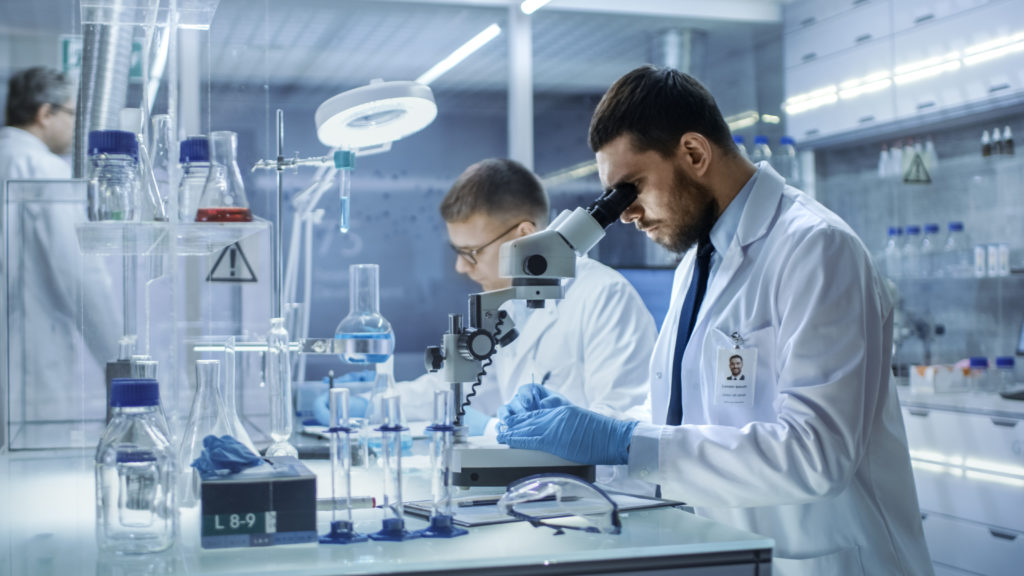Our previous article ‘Chemistry and Modern Innovation: Part 1’ outlined the ways in which chemistry has facilitated developments in other industries, looking at a number of innovations reliant on chemical products and processes. In this article, we will consider how chemical innovation itself can be progressed using technologies developed in other fields to facilitate the advancement of research and production capabilities.
Whilst many emerging technologies are rooted in chemical innovation, it is clear that chemical research and development can itself benefit from the technological advances of other industries. Revolutionary technologies such as 3D printing and artificial intelligence (AI) are capable of advancing the chemical industry in ways in which, until even a few years ago, did not appear to be possible. In fact, the acceleration of chemical research capabilities and the subsequent learning and innovation possible through the use of these smart technologies is currently playing a fundamental role in the global response to the coronavirus (covid-19) outbreak, and will likely be central to the continued development of this core industry.
Printing the Future
3D printing has the potential to transform research and development in the chemical industry, providing a cost-effective way of reliably creating expensive and complex laboratory equipment. For example, in just a few hours and using inexpensive material, it is now possible to 3D print robust miniaturised fluid reactors for use as ‘micro-platforms’ in organic syntheses and material processes. Furthermore, in response to the requirement for personal protection equipment for frontline workers during the covid-19 outbreak, many companies and individuals have been able to readily produce multiple medical face shields, hands-free door openers and adjusters for face masks for medical staff in a very short space of time.
In other areas, 3D printing can be utilised to reduce costs across chemical supply chains, saving a significant amount of raw materials and with the capability to create replacement parts on site in chemical plants to reduce wait times. The use of 3D printing in this capacity therefore only looks set to increase, lowering costs and improving operational efficiency for the chemical industry as a whole.
This suggests that there is future potential for 3D printing to boost chemical research and production capabilities, thus furthering the advancement of cross-sector collaborations involving chemical innovation.
AI: An Essential Lab Companion?
It is impossible to ignore the benefits that big data and advanced analytics such as AI may have for the development and advancement of chemical research. Predicting the outcome of chemical reactions is difficult on account of the vast number of variables involved. However, AI holds the potential to not only accelerate, but also increase the accuracy of chemical research and development, the technology demonstrating clear capabilities in the prediction of chemical reactions and laboratory experiments. Additionally, this advanced analytic could be crucial to facilitating unprecedented productivity in the pharmaceutical industry across areas such as disease prediction and characterisation to enhance patient care and provide personalised treatment, as well as the significant benefits for reduction to the length and costs associated with drug discovery. The ability of AI to interpret large unstructured data sets and predict and solve problems quickly and to a high degree of accuracy should provide acceleration in terms of chemical learning and understanding and perhaps most importantly, the production of products and processes beneficial to society through cross-sector collaborations. In fact, major chemical companies are already expanding their knowledge in this area, forming strategic collaborations with AI-driven companies and academic partners in order to unlock the full potential of AI for the chemical industry.
IP Collaboration Considerations
Smart technologies such as AI look set to be crucial to aiding the continual development of our chemical understanding, leading to further chemical innovation and cross over between the chemical and other fields for the production of advanced technologies. It is therefore likely that inventions will increasingly result from collaborations between different businesses, or in fact different entities of the same business, specialising in different technical fields. As discussed in our previous article ‘Chemistry and Modern Innovation: Part 1’, such cross-sector collaborations raise interesting questions when it comes to intellectual property in terms of ownership, assignment and licensing considerations. In particular, the subject of ownership in relation to AI is one creating much current discussion, and this in itself is a separate debate for another article. Licensing considerations may also be necessary for businesses utilising technologies such as 3D printing, for which the development of open source software and hardware has flourished in recent years.
A strong IP portfolio is crucial to a business’s strategy and growth and when businesses collaborate to create innovative technologies, IP considerations must be at the heart of these agreements for each business to achieve commercial success. It is not only patent protection that could be crucial in protecting and preventing others from exploiting an innovation. Trade mark protection and design rights can often play a pivotal role in a business’ IP portfolio, and every innovative product or process needs to be assessed separately in order to correctly identify the appropriate forms of IP protection.
To keep up with the ever-increasing demands of modern society, it is likely that future cross-sector collaborations will be essential in continuing the development of exciting innovative technologies.
See here for more information on GJE’s Chemistry team and how they can help protect your innovation.

